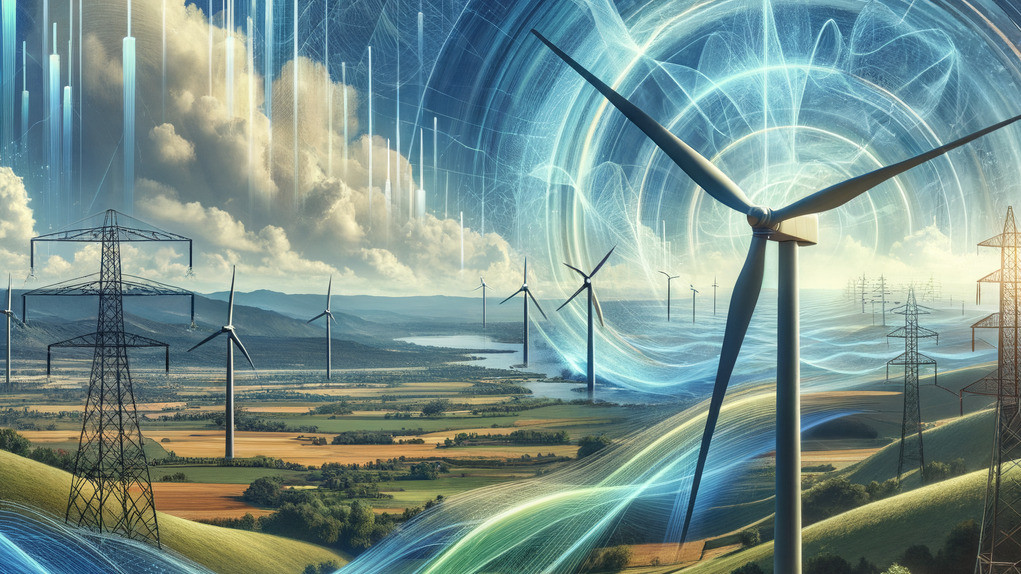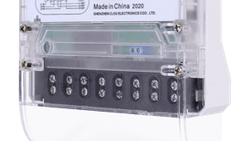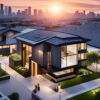As the world increasingly turns to renewable energy sources to meet its power needs, the integration of these green power sources with the existing electrical grid has become a focal point for engineers and energy experts. Among renewable energy technologies, wind turbines play a significant role. However, one of the key challenges they pose is maintaining synchronization with the net frequency of the power grid. This article explores the importance, challenges, and solutions related to the net-frequency synchronization of wind turbines.
Understanding Net-Frequency Synchronization
The power grid operates at a specific frequency: 50 Hz in many parts of the world, and 60 Hz in others. All generators connected to the grid, including wind turbines, must match this grid frequency (net frequency) and maintain the correct phase relationship with the grid's voltage to achieve synchronization. This is crucial because even minor deviations can lead to inefficiencies, potential damage to the infrastructure, and even grid failures.
The Challenge with Wind Turbines
Wind turbines, unlike conventional power plants which use synchronous generators, typically use induction generators or power electronics to interface with the grid. The variable nature of wind speeds means that the power output from wind turbines is not constant, which can lead to frequency variations if not managed properly.
Synchronizing a wind turbine with the net frequency involves two main aspects:
- Speed Control
The rotational speed of the wind turbine's generator must be controlled to match the grid frequency. - Phase Matching
The phase of the voltage generated by the wind turbine must align with the phase of the grid voltage.
Technologies for Synchronization
There are a few key technologies used for grid frequency synchronization of wind turbines:
Inertial Response – A Key Solution for Frequency Stabilization
Inertial response plays a crucial role in stabilizing grid frequency, and wind turbines can be equipped with controls that enable them to provide this essential function. When there is a sudden drop in grid frequency, wind turbines with inertial response capabilities can temporarily increase their power output to assist in stabilizing the frequency.
How does it work? When a grid frequency drop occurs, wind turbines equipped with inertial response controls detect the change and swiftly respond by ramping up their power output. By injecting additional power into the grid, these wind turbines effectively act as virtual generators with inertia, helping to counterbalance the frequency deviation.
This is particularly valuable in situations where there is a high penetration of wind power generation on the grid. As wind turbines typically do not possess the same level of inherent inertia as conventional synchronous generators, the ability to provide inertial response becomes crucial in maintaining grid frequency stability.
By actively participating in frequency regulation through inertial response, wind turbines contribute to the overall reliability and stability of the power system. This capability showcases the flexibility and adaptability of wind power as a renewable energy source.
Variable Speed Technology – Enhancing Wind Turbine Performance
In the realm of wind power generation, most modern wind turbines utilize variable speed drives, which offer significant advantages over fixed speed induction generators. These variable speed drives enable precise control of the rotor speed independently of the grid frequency, resulting in enhanced flexibility and improved frequency response.
Unlike fixed speed induction generators, which operate at a constant speed determined by the grid frequency, variable speed wind turbines can adjust their rotor speed via blade pitch to optimize power generation based on the prevailing wind conditions. This flexibility allows wind turbines to capture more energy from varying wind speeds, improving overall efficiency and maximizing power output.
Moreover, the ability to independently control the rotor speed provides wind turbines with a more dynamic response to grid frequency fluctuations. In the event of a drop in grid frequency, wind turbines equipped with variable speed technology can adjust their rotor speed accordingly, contributing to grid stability. This precise control allows for faster and more accurate response to frequency deviations, helping to maintain the desired grid frequency within acceptable limits.
The variable speed technology also offers benefits in terms of grid integration. By decoupling the rotor speed from the grid frequency, wind turbines can actively participate in ancillary services, such as frequency regulation and primary control reserve. This means that wind turbines can provide additional support to the grid by adjusting their power output in response to real-time grid requirements, enhancing the overall reliability and stability of the electrical energy system.

Grid-Forming Inverters – Empowering Wind Turbines for Enhanced Stability
In recent years, the advent of advanced grid-forming inverters has revolutionized the capabilities of wind turbines, enabling them to operate independently of the grid and function as voltage and frequency sources. This groundbreaking technology empowers wind plants to actively contribute to stabilizing grid frequency, even during outages.
Traditional wind turbines rely on the grid for voltage and frequency references, making them unable to operate in isolation. However, grid-forming inverters change this dynamic by allowing wind turbines to generate their own stable voltage and frequency, effectively acting as virtual power plants.
By operating as voltage and frequency sources, wind turbines equipped with grid-forming inverters can provide crucial support to the grid during outages or disturbances. In the event of a grid failure, these advanced inverters allow wind turbines to continue supplying power and help stabilize the grid frequency, minimizing the impact on the overall system.
Furthermore, the ability of wind plants to operate independently of the grid using grid-forming inverters brings additional benefits. It allows wind turbines to actively participate in primary frequency control, contributing to the stability and reliability of the electrical energy system. This capability enhances the resilience of wind power integration and strengthens the overall grid infrastructure.
Moreover, grid-forming inverters enable wind plants to seamlessly transition between grid-connected and islanded modes. This flexibility allows wind turbines to operate in remote or off-grid locations, providing clean and sustainable power without relying on an external grid connection.
Synthetic Inertia – Harnessing the Power of Control Schemes for Enhanced Grid Stability
In the quest for a more sustainable and reliable electrical energy system, synthetic inertia has emerged as a key concept. This innovative approach enables control schemes to mimic the frequency response of conventional synchronous machines, providing virtual inertial response through fast-acting active power adjustments.
Traditionally, synchronous machines connected to the grid have provided inherent inertia, helping to stabilize frequency deviations. However, as the energy landscape evolves and renewable energy sources like wind and solar become more prevalent, the need for alternative solutions arises. Synthetic inertia offers a promising path forward.
With synthetic inertia, wind turbines and other renewable energy sources equipped with advanced control schemes can replicate the behavior of synchronous machines. By adjusting their active power output in real-time, these devices can emulate the frequency response typically associated with conventional generators.
The key to synthetic inertia lies in the fast-acting nature of the control schemes. Through sophisticated algorithms and real-time monitoring of grid frequency, wind turbines can rapidly adjust their active power to counteract frequency deviations. This virtual inertial response helps to maintain grid stability and minimizes the impact of sudden changes in power supply or demand.
One of the significant advantages of synthetic inertia is its compatibility with various renewable energy sources. Wind turbines, solar power plants, and even energy storage systems can contribute to providing this virtual inertial response. By leveraging the inherent flexibility and controllability of these devices, the electrical energy system can benefit from enhanced grid stability without relying solely on conventional synchronous machines.
Also, synthetic inertia enables wind turbines and other renewable energy sources to actively participate in frequency regulation and ancillary services. By dynamically adjusting their active power output, these devices can provide valuable support to the grid and help maintain the desired frequency within acceptable limits.
Frequency Droop Control – Empowering Inverters to Enhance Grid Stability
In the pursuit of a stable and reliable electrical energy system, frequency droop control has emerged as a powerful tool. By programming inverters to adjust their active power output based on grid frequency deviations, this innovative control scheme provides a primary frequency response service, contributing to enhanced grid stability.
Conventionally, synchronous generators have played a crucial role in stabilizing grid frequency through their inherent droop characteristics. As the grid frequency deviates from its nominal value, these generators respond by adjusting their active power output in proportion to the frequency deviation. This droop response helps maintain a stable frequency, ensuring the proper functioning of electrical systems.
With the advent of advanced inverters, this frequency droop control capability has been extended to renewable energy sources, such as solar power plants and wind turbines. By programming the inverters with similar droop characteristics, they can dynamically adjust their active power output in response to changes in grid frequency.
The programming of frequency droop control in inverters involves setting specific droop coefficients that determine the rate at which the active power output changes with respect to frequency deviations. These coefficients are carefully calibrated to achieve the desired response, ensuring that the inverters provide the necessary primary frequency response service.
By participating in primary frequency response, inverters equipped with frequency droop control actively contribute to grid stability. As the grid frequency deviates, the inverters respond by ramping up or reducing their active power output, helping to restore the frequency to its nominal value. This rapid adjustment helps mitigate frequency deviations and maintain the overall stability of the electrical energy system.
Moreover, frequency droop control in inverters offers advantages beyond primary frequency response. It enables renewable energy sources to actively participate in frequency regulation and ancillary services, fostering their integration into the grid. This capability enhances the flexibility and controllability of these sources, making them valuable assets in maintaining grid stability.
Low-Voltage Ride-Through – Ensuring Grid Connection and Stability during Faults
In the pursuit of a robust and reliable electrical energy system, low-voltage ride-through capabilities have emerged as a critical feature for wind turbines. These capabilities enable turbines to stay connected to the grid during faults, preventing uncoupling that could exacerbate frequency deviations and compromise grid stability.
During fault conditions, such as voltage dips or short circuits, the grid voltage may momentarily drop below the nominal level, posing a challenge for wind turbines. In the past, conventional turbines would disconnect from the grid to protect their own equipment, leading to an abrupt loss of power generation and potential disturbances in the grid frequency.
Low-voltage ride-through capabilities address this challenge by allowing turbines to remain connected to the grid even during faults. By employing advanced control strategies and protective measures, wind turbines can ride through these low-voltage events, ensuring a stable grid connection and minimizing disruptions to power generation.
The key to low-voltage ride-through lies in the ability of turbines to adjust their reactive power output and control their electrical behavior in response to changes in grid voltage. When a fault is detected and the grid voltage dips below a certain threshold, the turbines activate their ride-through mode, which involves reducing their active power output while simultaneously injecting reactive power to support the grid voltage.
By dynamically managing their reactive power capabilities, wind turbines can provide voltage support and help stabilize the grid during fault conditions. This proactive response prevents uncoupling and the subsequent loss of generation capacity, which could further impact grid frequency and stability.
Low-voltage ride-through capabilities are typically achieved through a combination of hardware and software enhancements in wind turbine systems. These enhancements may include the integration of advanced power electronics, protective relays, and sophisticated control algorithms that enable rapid and seamless transitions between different operating modes.
Wider Control Areas – Strengthening Grid Resilience through Expanded Balancing Regions
As the integration of variable renewable generation, such as solar and wind power, continues to grow, the need for wider control areas becomes increasingly apparent. By expanding the balancing regions and facilitating intra-area transfers, grid operators can effectively mitigate the frequency impacts caused by the fluctuations in renewable generation.
Traditionally, power systems were divided into smaller control areas with limited geographical reach. Each control area operated independently, with its own set of balancing resources and frequency control mechanisms. However, with the rise of renewable generation, these smaller control areas face challenges in maintaining grid stability due to the intermittent nature of renewable sources.
Wider control areas encompass larger geographical regions, combining multiple smaller control areas into a single cohesive unit. This expansion allows for a more diverse and robust pool of balancing resources, including conventional power plants, energy storage systems, and demand response programs. By pooling these resources together, grid operators can effectively manage the frequency deviations caused by changes in renewable generation output.
In addition to the increased availability of balancing resources, wider control areas enable greater flexibility in intra-area transfers. This means that surplus electricity generated in one part of the control area can be efficiently transmitted to areas experiencing deficits, ensuring a balanced supply-demand equilibrium. By optimizing the utilization of renewable generation across the wider control area, grid operators can mitigate frequency impacts and maintain grid stability more effectively.
The implementation of wider control areas requires advanced communication and coordination infrastructure, as well as sophisticated control algorithms and real-time monitoring systems. These technologies enable seamless information exchange and facilitate the optimal utilization of resources across the expanded control area.
Furthermore, wider control areas also offer additional benefits beyond frequency mitigation. They enhance the integration of renewable generation by providing a larger market for renewable energy producers, promoting more efficient resource allocation, and reducing the need for curtailment.
Solutions for Maintaining Synchronization
Energy Storage Systems
Energy storage systems can act as a buffer, absorbing excess energy when production is high and supplying energy when there is a deficit. This smoothing effect can help maintain the net frequency and provide a more stable power supply.
Advanced Control Systems
Sophisticated control systems use algorithms to predict wind speed fluctuations and adjust the turbine's settings in real-time to maintain synchronization. These systems are the brains of the operation, constantly monitoring and adjusting the turbine's output.
Demand Response
Demand response programs can adjust the demand side of the equation in real-time, ensuring that power consumption aligns with the available wind energy, thereby helping to maintain grid frequency.
Grid Support Services
Wind farms can provide ancillary services such as frequency regulation and reactive power support, using advanced inverters and control systems to respond swiftly to changes in grid frequency.
The Future of Synchronization
As wind energy becomes a larger part of the energy mix, the importance of net-frequency synchronization grows. Future advancements may include more sophisticated forecasting models, improved energy storage solutions, and grid infrastructure upgrades to better handle the variability of renewable energy sources.
Takeaway
Net-frequency synchronization is crucial for integrating wind turbines into the power grid effectively. It requires a multifaceted approach, combining advanced technology with smart grid management practices. Achieving synchronization not only ensures the stable operation of wind turbines but also contributes to the overall reliability and efficiency of the power grid. As renewable energy adoption accelerates, continued innovation in synchronization technologies will be key to harnessing the full potential of wind energy.
If you have questions about how CLOU energy storage systems can contribute to stabilizing grid frequency within wider control areas, or if you would like to explore the innovative solutions we offer to enhance grid resilience and enable a seamless integration of renewable generation, please do not hesitate to reach out to us. Our team of experts is here to provide you with the information and support you need. We look forward to assisting you on your journey towards a more sustainable and reliable electrical energy system.
Until then, stay in sync and keep your energy flowing!





All comments are moderated before being published. Inappropriate or off-topic comments may not be approved.